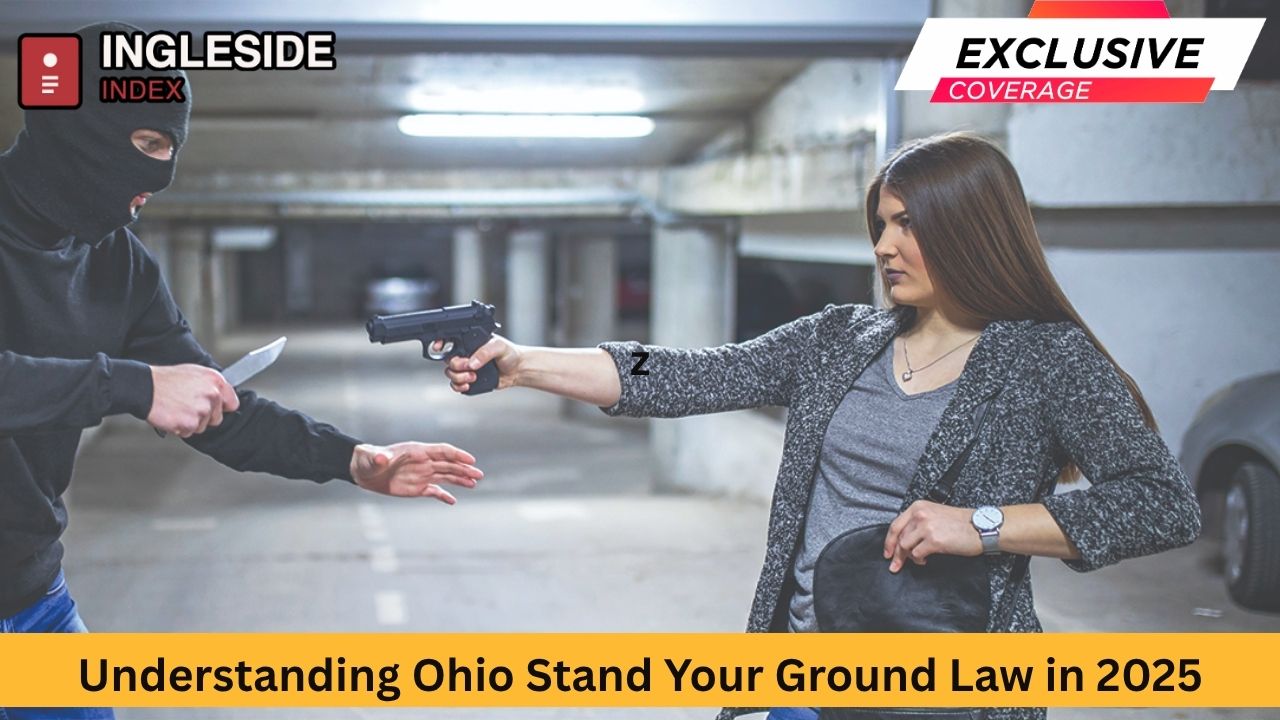The concept of self-defense has been at the heart of American law for centuries, evolving alongside changing social landscapes and legal interpretations. In Ohio, the introduction and expansion of the Stand Your Ground law have brought significant changes to how residents in cities like Columbus, Cleveland, Cincinnati, Toledo, and Dayton can defend themselves in threatening situations. As of 2025, understanding the nuances, legal dynamics, and real-world implications of this law is crucial for every Ohioan—whether you’re a gun owner, a legal professional, or simply a concerned citizen.
The Foundations of Self-Defense Law in Ohio
Evolution from Duty to Retreat to Stand Your Ground
For decades, Ohio followed the “duty to retreat” doctrine. Under this approach, a person threatened with harm had to attempt to escape the danger, if it was safe to do so, before resorting to force. Exceptions existed under the so-called “Castle Doctrine,” which allowed people to defend themselves without retreat within their own homes or vehicles.
The legal landscape shifted in 2021, when the Ohio Legislature enacted a new Stand Your Ground law. This change meant that anyone lawfully present anywhere in Ohio—whether it’s the bustling streets of downtown Columbus, the parks of Akron, or a suburban parking lot in Parma—no longer carries a legal obligation to retreat when facing imminent danger. This expanded definition puts Ohio in line with over thirty states that have adopted some form of Stand Your Ground statute.
Core Principles of Stand Your Ground
Under the 2025 iteration of the law, Ohioans are permitted to use force, including deadly force, in self-defense if they:
-
Are not the aggressor in the incident
-
Have a lawful right to be present at the location
-
Reasonably believe they or another person are in imminent danger of death or great bodily harm
-
Use force that is proportionate and reasonable to the threat confronted
The law applies in homes, vehicles, and, now, public spaces such as downtown Cleveland streets, Toledo shopping centers, or even at public events in Youngstown.
How Stand Your Ground Is Applied in Ohio
Expansion Beyond Home and Vehicle
The most significant adjustment brought about by the Stand Your Ground law is the removal of geographic limits on self-defense without retreat. Previously, individuals could only stand their ground in their residence or occupied vehicle. Now, from university campuses in Athens to family gatherings in the parks of Dayton, Ohioans can legally defend themselves without first seeking escape, so long as they are in a place where they have a legal right to be.
Legal Burden Shift
Another consequential change is how legal cases involving self-defense are prosecuted and defended in Ohio courts. Before the law’s expansion, individuals who acted in self-defense bore the burden of proving their actions were justified. Today, the state—represented by prosecutors in city courthouses like those in Cincinnati and Hamilton—must now prove beyond a reasonable doubt that a defendant did not act in self-defense. This burden-shift can significantly affect trial strategies and outcomes, as it is often difficult to prove a negative—whether an alternative to deadly force was available or a threat was not truly imminent.
Real-World Scenarios
Consider a scenario in Akron: An individual is approached aggressively in a parking lot and feels their life is threatened. Under the previous laws, their first legal responsibility was to attempt retreat if they could do so safely. Under the current Stand Your Ground provisions, that responsibility is removed, and their decision to defend themselves, even with deadly force, will be examined through the lens of whether their belief in imminent danger was reasonable and whether their response was proportionate.
The Role of Reasonableness and Proportionality
Reasonable Belief in Danger
“Reasonable belief” remains a central pillar. This means that if a case goes to trial in, say, a Lucas County courtroom in Toledo, the jury will be asked to judge whether a typical person, placed in the same situation, would also believe they were in immediate danger.
Proportionate Response
Self-defense claims are scrutinized for whether the force used was proportional to the danger posed. Using deadly force when only minimal physical harm is threatened, for example, is not likely to be protected under the law. If a minor confrontation in Dayton escalates unnecessarily into gunfire, courts will closely analyze the proportionality of the response.
The Castle Doctrine Remains
While Stand Your Ground laws expand the defense to public spaces, Ohio’s Castle Doctrine remains unchanged in 2025. The doctrine asserts that you have no duty to retreat when threatened in your own home or vehicle—an idea closely aligned with longstanding American traditions of personal property defense.
Stand Your Ground Law: City Impact
Columbus
As the largest city in Ohio, Columbus has seen considerable debate around the law. Police departments have adjusted their training and public outreach programs to address growing concerns about confrontations, especially in neighborhoods with higher crime rates. Community workshops on legal gun ownership and on knowing one’s rights have become more frequent.
Cleveland
Cleveland’s diverse population and history with gun violence pose unique challenges. Supporters of Stand Your Ground in the city argue that it empowers residents to protect themselves amid longstanding public safety concerns. Detractors claim it could escalate confrontations, particularly in densely populated neighborhoods or during citywide events.
Cincinnati
In Cincinnati, legal experts and activists have worked to educate residents on both the protections and the limits of the law. The Cincinnati Police Department routinely updates its engagement strategies to balance the rights of gun owners with broader concerns about public safety.
Toledo
In Toledo, community groups have emphasized the importance of understanding the new legal standards. Education efforts focus on ensuring that residents know their rights and responsibilities, particularly in situations that may quickly escalate, like traffic disputes or altercations in public spaces.
Dayton and Youngstown
Dayton and Youngstown, cities with both urban and suburban identities, face a dual challenge—addressing concerns from urban neighborhoods with higher violence rates and from suburban areas where gun ownership is widespread. Both cities have launched public initiatives to remind residents that while Stand Your Ground laws remove the obligation to retreat, using any force, especially deadly force, should always be a last resort.
Statistics and Trends
Homicide and Crime Rates
Studies across the United States have found that the implementation of Stand Your Ground laws can impact homicide rates. National data suggest an increase of approximately 8%-11% in monthly homicide and firearm homicide rates following the adoption of such laws. In Ohio specifically, cities like Cleveland and Columbus have seen fluctuations in violent incidents, but attributing these changes purely to Stand Your Ground remains complex due to a multitude of social and economic factors.
Annually, Ohio sees over 500 deaths due to gun violence, with major cities like Cincinnati, Cleveland, and Columbus accounting for a significant portion of these cases. Some research has indicated that states with Stand Your Ground laws report a measurable uptick in justifiable homicides, but the overall effect on crime deterrence remains debated among experts.
Demographic Impact
The law affects all Ohioans, but demographic data often reveal disparities in how Stand Your Ground statutes are invoked and adjudicated. In urban cities like Akron and Cleveland, there has been heightened attention on how racial and socioeconomic factors influence legal outcomes of self-defense claims.
Support and Criticism
Arguments in Support
-
Empowers individuals to defend themselves and their families in dangerous situations
-
Removes ambiguity about one’s right to use force in self-defense
-
Shifts legal protections toward victims rather than assailants, according to advocates
Arguments in Opposition
-
May embolden individuals to use deadly force in situations where retreat is possible, leading to unnecessary violence
-
Studies suggest a correlation with increased firearm-related deaths and injuries after adoption
-
Critics argue it disproportionately affects minority and lower-income communities due to disparities in law enforcement and judicial interpretation
Practical Implications for Ohio Residents
Gun Ownership and Education
With the expansion of self-defense rights comes increased responsibility for gun owners in Ohio. Urban centers like Columbus, Cleveland, and Toledo have emphasized the importance of firearm safety courses, especially for concealed carry permit holders. Education campaigns warn that the Stand Your Ground law is not blanket immunity from prosecution; any use of force, especially resulting in injury or death, is thoroughly investigated.
Law Enforcement and Judicial Response
Police officers are now more likely to encounter individuals invoking Stand Your Ground in investigations. This has led to changes in how shootings and violent confrontations are processed in the field and in court. Prosecutors, particularly in cities like Cincinnati or Akron, face a higher bar: they must prove the absence of a reasonable belief in danger or the presence of unlawful aggression.
Civil Litigation Risks
Beyond criminal prosecution, parties engaged in self-defense incidents may still face civil lawsuits. The Stand Your Ground law does not protect against civil actions if the use of force is deemed excessive or unjustified, so many attorneys recommend maintaining liability insurance for gun owners in cities with higher incident rates.
Notable Cases and Precedents
In recent years, several high-profile cases in cities such as Cleveland and Dayton have tested the applications and boundaries of Stand Your Ground. Some have resulted in acquittals, while others have led to convictions where juries deemed the defendants’ belief in imminent danger unreasonable or their use of force excessive.
These cases have prompted calls for more precise legal guidelines and for comprehensive education for the public, law enforcement, and legal professionals alike.
Community Engagement and Outreach
Ohio cities have rolled out a series of programs aimed at public awareness and education. For instance, in Columbus, neighborhood associations partner with local law enforcement to hold self-defense and legal rights seminars. Cleveland’s city council and legal aid societies regularly distribute updated resource guides detailing how Stand Your Ground impacts day-to-day life.
Many suburban and rural communities, such as those surrounding Cincinnati and Toledo, hold workshops emphasizing peaceful conflict resolution and the serious responsibilities that come with carrying a firearm in public.
Legislative Updates and Future Directions
The Ohio Legislature has continued to review and refine the state’s self-defense policies. While Stand Your Ground remains in place, debates persist in the Statehouse in Columbus about possible future amendments, such as stricter limitations on where the law applies or requirements for additional training and education for gun owners.
Pressure from advocacy groups, both for and against gun rights expansion, ensures that public policy surrounding Stand Your Ground will continue to evolve. Cities like Dayton and Cleveland regularly see citizen forums and legislative hearings aimed at balancing public safety with individual rights.
Responsibilities of Citizens
With expanded self-defense rights come greater responsibilities. Ohioans must:
-
Understand both when and how they can legally use force in defense of themselves or others
-
Participate in reputable firearms training, especially if carrying a weapon in public spaces
-
Remain aware of changes in local and state law affecting self-defense
-
Educate younger generations on conflict avoidance, peaceful resolution, and safe gun handling
Closing Thoughts
The expansion of Stand Your Ground in Ohio represents a significant legal and social shift, empowering citizens to protect themselves while raising complex questions about public safety and justice. Whether you reside in the heart of downtown Cleveland, the suburbs of Cincinnati, or the rural outskirts near Toledo, understanding the law—and its limits—is not just a legal necessity but a civic duty.
As 2025 unfolds, Ohio remains at the forefront of the national conversation on self-defense, gun rights, and public safety. The future for Stand Your Ground in the Buckeye State will continue to evolve in response to court decisions, legislative changes, community needs, and the lived experiences of its diverse population. For every Ohioan, staying informed and engaged is the best path forward in navigating these powerful—and sometimes perilous—rights.




